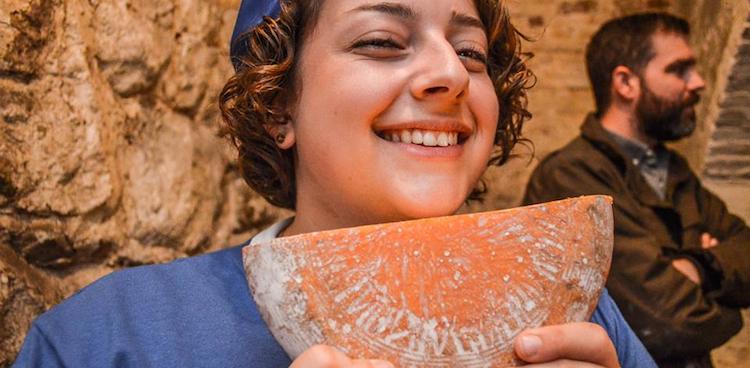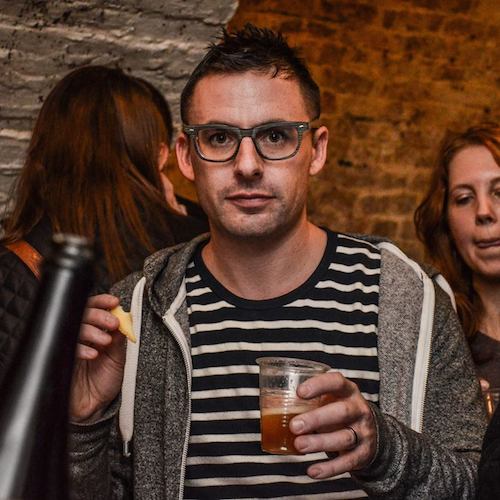
My home base of Brooklyn was once a bastion of blue-collar industry. We made Navy ships. We refined sugar. And, above all, we brewed beer. As recently as the 1960s, Brooklyn cooked up 10 percent of America’s beer. By the end of the 1970s, though, our brewing industry had vanished. Colossal, majestic brick structures drifted into disrepair, the equipment sold for scrap.
Though most of Brooklyn’s breweries have been repurposed or – sadly – razed, many lagering tunnels sat untouched and sealed, time capsules hidden 30 feet underground. There, the beers were fermented and conditioned in a cool climate, the temperature a steady 50-ish degrees whether the weather aboveground was snowy or sweltering.
With the advent of refrigeration, these brewing caves were about as useful as air conditioning in Antarctica. But in Crown Heights, the neighborhood I call home, Benton Brown and Susan Boyle have transformed the former Nassau Brewery’s 1850s-built lagering tunnels into Crown Finish Caves, a facility dedicated to aging one foodstuff that improves in a cool underground climate: cheese.

Parish Hill’s Humble Herdsman cheese was washed with several local Brooklyn brews for the In the Wash event.
I first met Benton and Susan a decade earlier, when I wrote a story about their renovation of the brewery’s icehouse into eco-focused lofts. Over the ensuing years, they turned their attention to the brewery, transforming it into office and workspace for architects, caterers, and kale-chip makers. The last, and trickiest, piece of the puzzle was the caves. They needed to install stairs and an elevator, the 21st century descending into the 19th century. About a year ago, Benton stopped me on the street to let me know that they’d finalized access to the underground, as well as turned part of the tunnels into a modern cheese-aging facility called Crown Finish Caves.
To honor the building’s past, we threw a cave event featuring some of New York City’s finest brewers of lager beer. The bash was a blast. The only thing missing was the cheese. Over the spring and summer, Benton, who studied cheesemaking in France and Vermont, started receiving shipments of cheese from Parish Hill Creamery, master cheesemaker Peter Dixon’s new Vermont operation.
Among the cheeses were West West Blue, a traditional Gorgonzola-style blue cheese; Suffolk Punch, a classic pasta filata; and Humble Herdsman, a semisoft Tomme that Benton was washing with Virtue Cider. “Why don’t we wash the cheese with locally brewed beer?” Benton suggested.
His genius notion was the genesis of In the Wash. The gist: Every other day for three months, Benton bathed Humble Herdsman with hoppy pale ales, saisons spiked with wild and funky Brettanomyces yeast, dry cider, and rustic farmhouse ales. The booze kept the cheese moist, encouraging the bacterial growth that, over time, gives nutty Humble Herdsman an earthy, vegetal nuance.
As the days and months disappeared, it was clear that different yeasts, hops and malts helped the cheese acquire distinct characteristics. Queens-based Finback’s Replicator Black Rye “Pale Ale” developed a dark tint, while the wash with Brooklyn-born Other Half’s Grand Cru (aged in red-wine barrels alongside Brettanomyces) was salmon-toned. The waiting made me hungry. And thirsty.
At last, this past weekend Benton and I brought more than 75 beer and cheese fans down the winding staircase to devour the long-aged washed cheeses alongside their wash alcohol. It was a case study in how altering a single variable – the wash – can so drastically alter a control. Some cheeses were funkier, while others had a slight acidic zing or bitter nuances from the hops. Some rinds were dappled with a moldy constellation, and some were firm and reddish. Pinpointing why required no deep spelunk into fermentation science. The reason was simply the beer or cider in your hand.
Beyond that, In the Wash underscored the revival of brewing, and the art of aging cheese, in the Big Apple. This was the urban meeting the agrarian and finding a delicious common ground. It was future of both Brooklyn’s brewing and cheese scene, set in its past. The temperature may have been 50 degrees underground, but the event left me with a warm, warm feeling.





